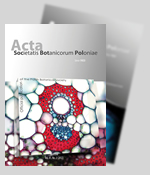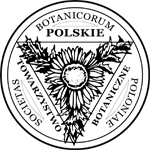Determination of potential glacial refugia and possible migration routes of Campylocentrum (Vandeae, Orchidaceae) species through the Darién Gap
Abstract
Keywords
Full Text:
PDFReferences
Kanning M. Darién Gap. In: McColl RW, editor. Encyclopedia of world geography. New York, NY: Infobase Publishing; 2005. p. 234–235.
Williams LO, Allen PH, Dressler RL. Orchids of Panama: a facsimile reprint of “The Orchidaceae”, “Flora of Panama”. Saint Louis, MO: Missouri Botanical Garden; 1980. (Monographs in systematic botany; vol 4).
Cárdenas-López D. Inventario florístico en el Cerro del Cuchillo, Tapón del Darién Colombiano. Caldasia. 2003;25(1):101–117.
Bentham G. Notes on Orchidaceae. J Linn Soc Bot. 1881;18:281–361.
Dressler RL. Campylocentrum. In: Hammel BE, Grayum MH, Herrera C, Zamora Villalobos N, editors. Manual de plantas de Costa Rica. Saint Louis, MO: Missouri Botanical Garden; 2003. p. 38–41. (Monographs in systematic botany; vol 3).
Dressler RL. Field guide to the orchids of Costa Rica and Panama. New York, NY: Cornell University Press; 1993.
Bogarín D, Pupulin F. The genus Campylocentrum (Orchidaceae: Angraecinae) in Costa Rica: some critical questions and a few answers. In: Pridgeon AM, Suarez JP, editors. Proceedings of the second scientific conference on Andean orchids. Loja: Universidad Técnica Particular de Loja; 2009. p. 32–45.
Bogarín D, Pupulin F. The genus Campylocentrum (Orchidaceae: Angraecinae) in Costa Rica: a Revision. Harv Pap Bot. 2010;15(2):353–414. http://dx.doi.org/10.3100/025.015.0216
Clark PU, Dyke AS, Shakun JD, Carlson AE, Clark J, Wohlfarth B, et al. The last glacial maximum. Science. 2009;325(5941):710–714. http://dx.doi.org/10.1126/science.1172873
Pearson RG, Raxworthy CJ, Nakamura M, Townsend Peterson A. Predicting species distributions from small numbers of occurrence records: a test case using cryptic geckos in Madagascar. J Biogeogr. 2006;34(1):102–117. http://dx.doi.org/10.1111/j.1365-2699.2006.01594.x
Elith J, Phillips SJ, Hastie T, Dudík M, Chee YE, Yates CJ. A statistical explanation of MaxEnt for ecologists: Statistical explanation of MaxEnt. Divers Distrib. 2011;17(1):43–57. http://dx.doi.org/10.1111/j.1472-4642.2010.00725.x
Phillips SJ, Dudík M, Schapire RE. A maximum entropy approach to species distribution modeling. In: ICML ‘04: Proceedings of the twenty-first international conference on machine learning. New York, NY: ACM Press; 2004. p. 655–662. http://dx.doi.org/10.1145/1015330.1015412
Phillips SJ, Anderson RP, Schapire RE. Maximum entropy modeling of species geographic distributions. Ecol Model. 2006;190(3–4):231–259. http://dx.doi.org/10.1016/j.ecolmodel.2005.03.026
Hijmans RJ, Cameron SE, Parra JL, Jones PG, Jarvis A. Very high resolution interpolated climate surfaces for global land areas. Int J Clim. 2005;25(15):1965–1978. http://dx.doi.org/10.1002/joc.1276
Urbina-Cardona JN, Loyola RD. Applying niche-based models to predict endangered-hylid potential distributions: are neotropical protected areas effective enough. Trop Conserv Sci. 2008;1(4):417–445.
Braconnot P, Otto-Bliesner B, Harrison S, Joussaume S, Peterchmitt J-Y, Abe-Ouchi A, et al. Results of PMIP2 coupled simulations of the mid-holocene and last glacial maximum. Part 1: experiments and large-scale features. Clim Past. 2007;3(2):261–277. http://dx.doi.org/10.5194/cp-3-261-2007
Olson JS, Allison LJ, Watts JA. Carbon in live vegetation of major world ecosystems. Report DOE/NBB-0037. Washington, DC: United States Department of Energy; 1983.
DOI: https://doi.org/10.5586/asbp.2014.030
|
|
|







